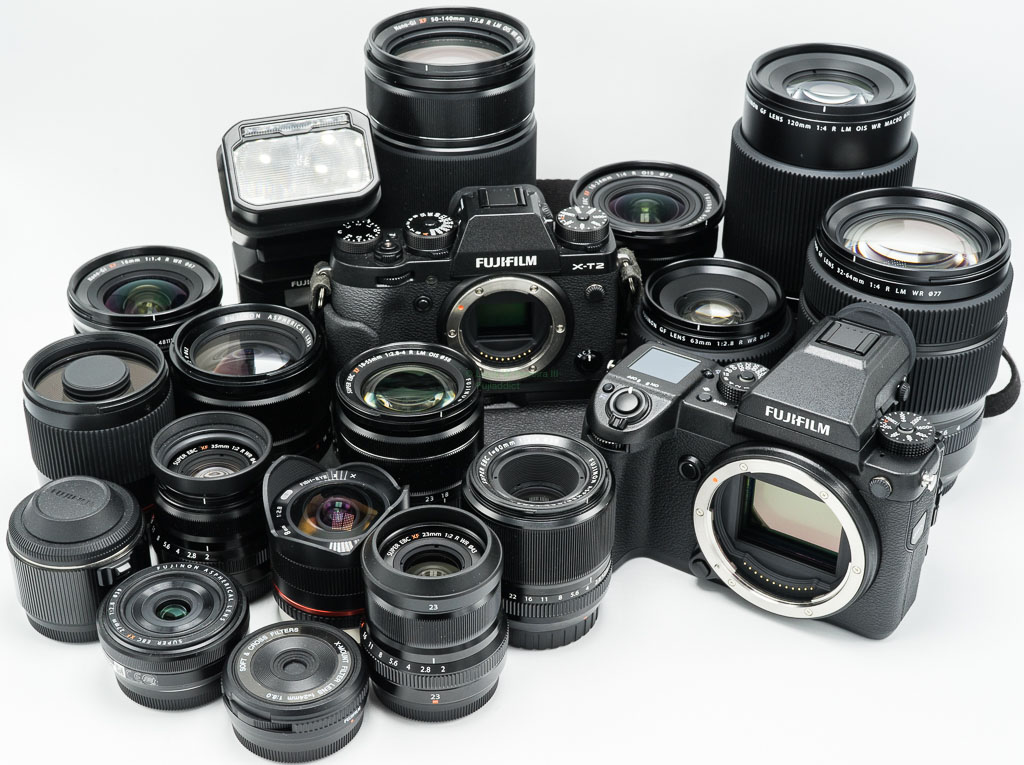
Yesterday I posted a Fujifilm-centric class for beginners and I was thinking about how I do not really have a lot of content for beginners on FujiAddict so I decided to put together a list of the top five reasons to start your journey into photography with Fujifilm over other brands.
- A Clear Exposure Triangle
- Capturing a moment in time depends on picking an appropriate Aperture, Shutter Speed, and ISO. This is where photography starts for most and Fujifilm has clearly labeled dials for each across most of its lineup. It hasn’t always been this way, but it has become most because Fujifilm is trying to move photographers to their system from more automated systems that hide these settings behind multifunction dials or worse put them in menus.
- Learning how to work an exposure triangle properly can allow you to capture almost anything you can imagine without motion blur and with correct exposure. Once you learn how to work an exposure triangle then you can move on to dialing in other aspects of your photography.
- Image Quality
- Fujifilm is known for having great image quality, especially when shooting JPEG. If capturing moments in time to share is your top priority very few cameras can do it as well as Fujifilm cameras can without shooting RAW and using a photo editor.
- A good photographer can capture the majority of what makes their image stand out in-camera without turning to an editor and it is my opinion that you should learn how to capture photos properly before you turn to photo editing software so starting with JPEG is a must because it is easy to get lazy about settings today with how much data modern RAW files contain.
- Finally, when you’re ready to move into a photo editor Fujifilm has gained broad support for its X-trans sensor so there are lots of editors to pick from now and many will let you apply Fujifilm film simulation profiles to your RAW files that closely match Fujifilm’s internal JPEG engine.
- What you see is what you get
- This is a big advantage mirrorless cameras enjoy over DSLR’s, but Fujifilm takes it a step further by applying your film simulation settings to what you see on screen, which helps photographers get more artistic with their work.
- While Fujifilm cameras aren’t monochrome they do have ACROS and other B&W film simulations that are well designed for B&W photography.
- There is no better way to practice B&W photography than having the world turned B&W through the EVF of a Fujifilm camera and if you really love B&W and master it you can move into a true monochrome camera system later for the potential of higher quality or even B&W film.
- Your camera will only get better with time
- Fujifilm is well known for updating their cameras frequently and they often add new features to their cameras that other makes would hold back until the next model year. This continuous improvement is starting to be adopted by the rest of the industry, but some are doing more than others.
- When you buy a Fujifilm camera you know that it will be supported for years to come and you will have 1 or 2 updates that make your camera feel like an entirely new camera, which other makes can’t claim yet since updates from other companies practically disappear when the new model is released.
- For evidence of how good Fujifilm is about supporting its cameras all you have to do is look to the first X camera Fujifilm released the X-Pro1 that was last updated in late 2020 almost a decade after its launch and less than a year from this article being published.
- Price
- Fujifilm has a camera for everyone from $799 with a lens to $9,999 body only and X series cameras have very comparably good image quality across the lineup so there really isn’t a bump up until you buy a GFX starting at $4,499
- With Fujifilm cameras, you’re mainly paying for unnecessary optional features like sensor-based stabilization as you move up the line of cameras, but there is one step up in sensor size from the X series which is APS-C to the GFX which is medium format. These features might be nice to have and they can make photography easier, but I think it is best to learn without them before learning to rely on them.
- Fujifilm also has an extensive lens collection that is beloved by most and it is priced well. I personally own almost every X mount lens on the market as you can see above and many GFX lenses, but the price of the GFX system has slowed me down considerably and the X system is still growing.
I think that pretty much covers the main advantages of picking Fujifilm cameras to learn photography over others, but if you have any questions or feel I missed something feel free to leave a comment below and I will get back to you. If price is your top concern pick up a Fujifilm X-T200, but if you spend a little more the Fujifilm X-T30 is probably the best camera to start learning photography with.
Please don’t forget to follow us on Facebook, Twitter, Instagram, YouTube
Plus our owners’ groups
Fujifilm GFX Owners Group
Fujifilm X-H Owners Group
Fujifilm X-T Owners Group
Fujifilm X-S Owners Group
Fujifilm X-Pro Owners Group
Fujifilm X-E Owners Group
Fujifilm X-A Owners Group
Fujifilm X100 Owners Group
